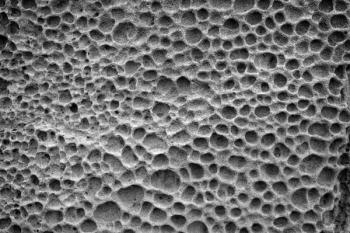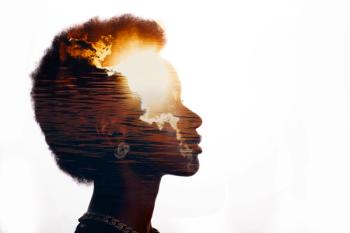
- Vol 33 No 2
- Volume 33
- Issue 2
Madness, Psychiatry, and the Visual Arts in History
While much in the history of “madness” has changed over the course of time, one of the most consistent-yet sometimes overlooked-features of that history has been the presence of the visual arts.
HISTORY OF PSYCHIATRY
While much in the history of “madness” has changed over time, one of the most consistent-yet sometimes overlooked-features of that history has been the presence of the visual arts. Dating back to ancient times, observers have attempted to understand and communicate the meaning of mental illness through paintings, drawings, sculpture, and ceramics and, later, photography and film.
Indeed, some of the most enduring images of what used to be called “insanity” and its treatment have been crafted by artists. Think of
[[{"type":"media","view_mode":"media_crop","fid":"46111","attributes":{"alt":"© ARTPARTA/SHUTTERSTOCK.COM","class":"media-image media-image-right","id":"media_crop_4654818004928","media_crop_h":"0","media_crop_image_style":"-1","media_crop_instance":"5323","media_crop_rotate":"0","media_crop_scale_h":"165","media_crop_scale_w":"150","media_crop_w":"0","media_crop_x":"0","media_crop_y":"0","style":"font-size: 13.008px; line-height: 1.538em; float: right;","title":"© ARTPARTA/SHUTTERSTOCK.COM","typeof":"foaf:Image"}}]]The histories of the visual arts and madness, however, are even more tangled than this. As Gail A. Hornstein, PhD,1 recently pointed out in an
Hornstein is Professor of Psychology at Mount Holyoke College. She is the author of numerous articles and books, including Agnes’s Jacket: A Psychologist’s Search for the Meanings of Madness.2 Throughout her career, she has been committed to recovering the voices and personal experiences of those living with mental illness. In fact, her
As Hornstein notes, prominent alienists-as asylum healers were called in the 19th century-and psychiatrists since the 1830s believed that the visual arts had a role to play within asylums. Jean Etienne Esquirol (Salpêtrière) turned to paintings and drawings, while Hugh Welch Diamond (Surrey County Lunatic Asylum) and Jean-Martin Charcot (Salpêtrière) took advantage of the new technology of photography to capture images of their charges.
Their purpose was 2-fold: either to “freeze the features” of patients to allow physicians an opportunity to more effectively identify physiognomical anomalies or to freeze the behavior of “lunatics” in order to flag patterns and discrete stages in their actions. In both cases, however, the ultimate intent was to help refine diagnosis.
In the early 20th century, some psychiatrists took a different approach to visual media. During World War I, German psychiatrist Max Nonne filmed his
At the Psychiatric Clinic at the University of Heidelberg, Hans Prinzhorn began collecting the artworks of psychiatric patients throughout central Europe in 1919. His aim was to explore what he believed to be the common, fundamental purpose of all creative activity: forging links between self and other. All told, Prinzhorn collected around 5000 paintings, drawings, sculptures, textiles, and installations by some 500 individuals. Some can still be seen today at the
From the colourful PET scans of the so-called “schizophrenic brain” that now fill psychiatric textbooks, to the cartoon images of neurotransmitters in pharmaceutical advertisements, to the extravagant performance art created by activists in today’s mad movement, images of madness are everywhere. I myself think that the only meaningful approach is to start with the lived experience of individuals, contextualising their “madness” within the rest of their life story and experience.1
To this day, the visual arts remain a vibrant part of the world of mental health care.
More on the History of Psychiatry
The events that were cited as the most important changes since World War II.
It is clear that unless things change radically in the coming decades, psychiatry-like other branches of medicine-will have to accommodate itself to the effects of disruptions to existing ecosystems.
After years of working with troubled individuals claiming to have been abducted by extraterrestrials, Harvard University Professor John Mack published a book. What made Mack and the book so controversial was the fact that he had come to accept that his patients’ stories were an accurate description of real events.
This article was originally posted on 12/15/2015 and has since been updated.
Disclosures:
Dr Eghigian is the History of Psychiatry Section Editor for Psychiatric Times. His full bio can found
References:
1. Hornstein GA. Madness from the outside in. Psychologist. 2015;28:1028-1031.
2. Hornstein GA. Agnes’s Jacket: A Psychologist’s Search for the Meanings of Madness. NY: Rodale Books; 2009.
3. Hornstein GA. Bibliography of First-Person Narratives of Madness in English. 2011.
Articles in this issue
almost 10 years ago
Introduction: An Essential Part of the Mental Health Evaluationalmost 10 years ago
New Insights Into Narcissistic Personality Disorderalmost 10 years ago
Comorbid Clinical and Personality Disorders: The Risk of Suicidealmost 10 years ago
Does Genius Equal Madness?almost 10 years ago
A Dearth of Psychiatric Bedsalmost 10 years ago
Amy: The Frenzy of Renownalmost 10 years ago
Suicide Clusters on College Campuses: Risk, Prevention, Managementalmost 10 years ago
Positive Psychiatry: An Interview With Dilip V. Jeste, MDalmost 10 years ago
Neuropsychiatric Masquerades: Diagnosis and Treatmentalmost 10 years ago
5 Mental Health Diagnostic Challenges: Update on “To Err Is Human”Newsletter
Receive trusted psychiatric news, expert analysis, and clinical insights — subscribe today to support your practice and your patients.















